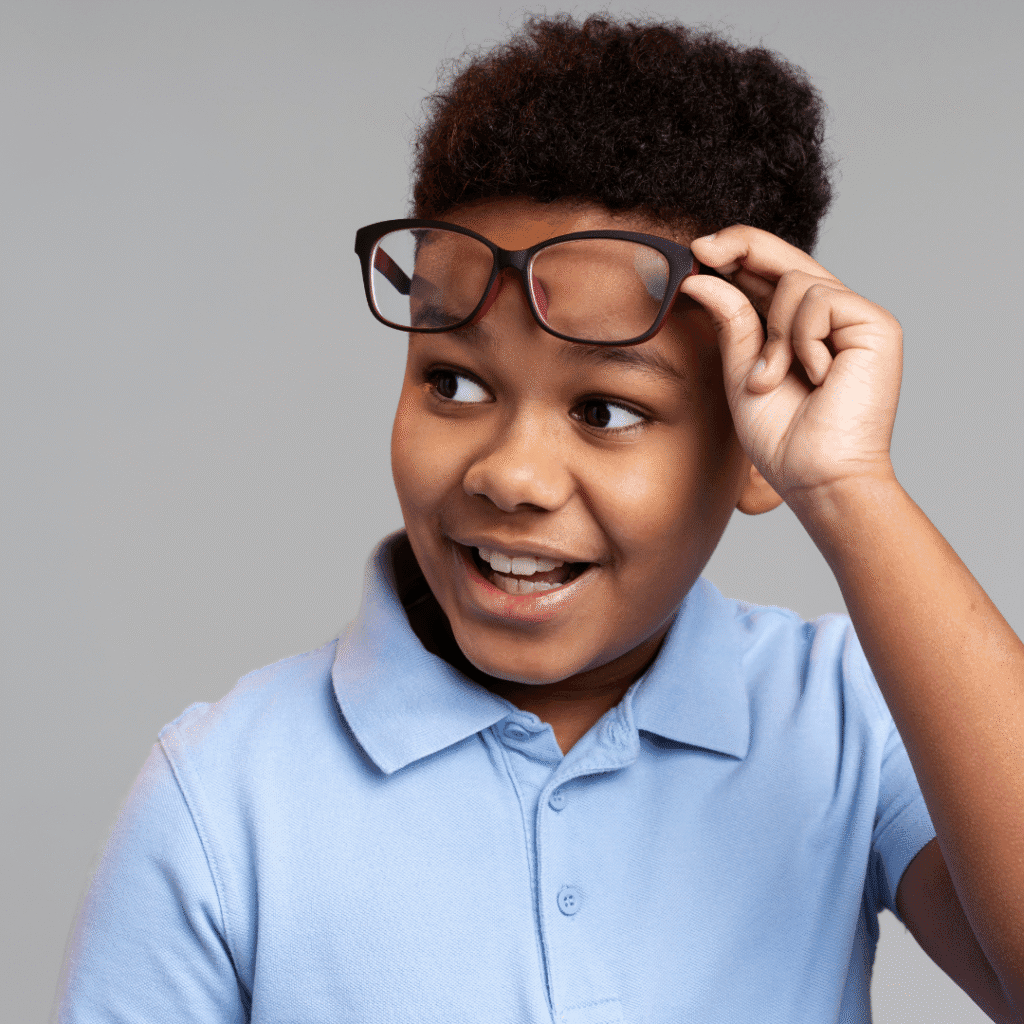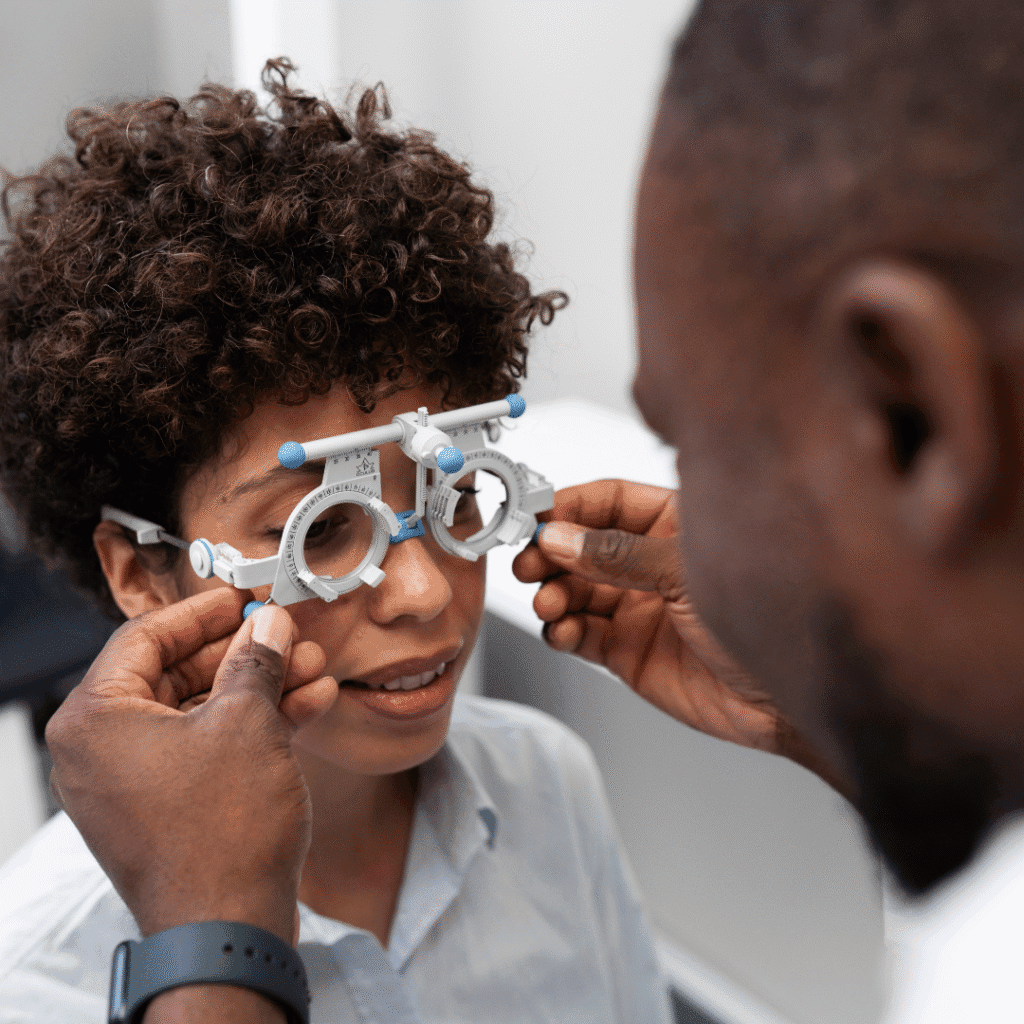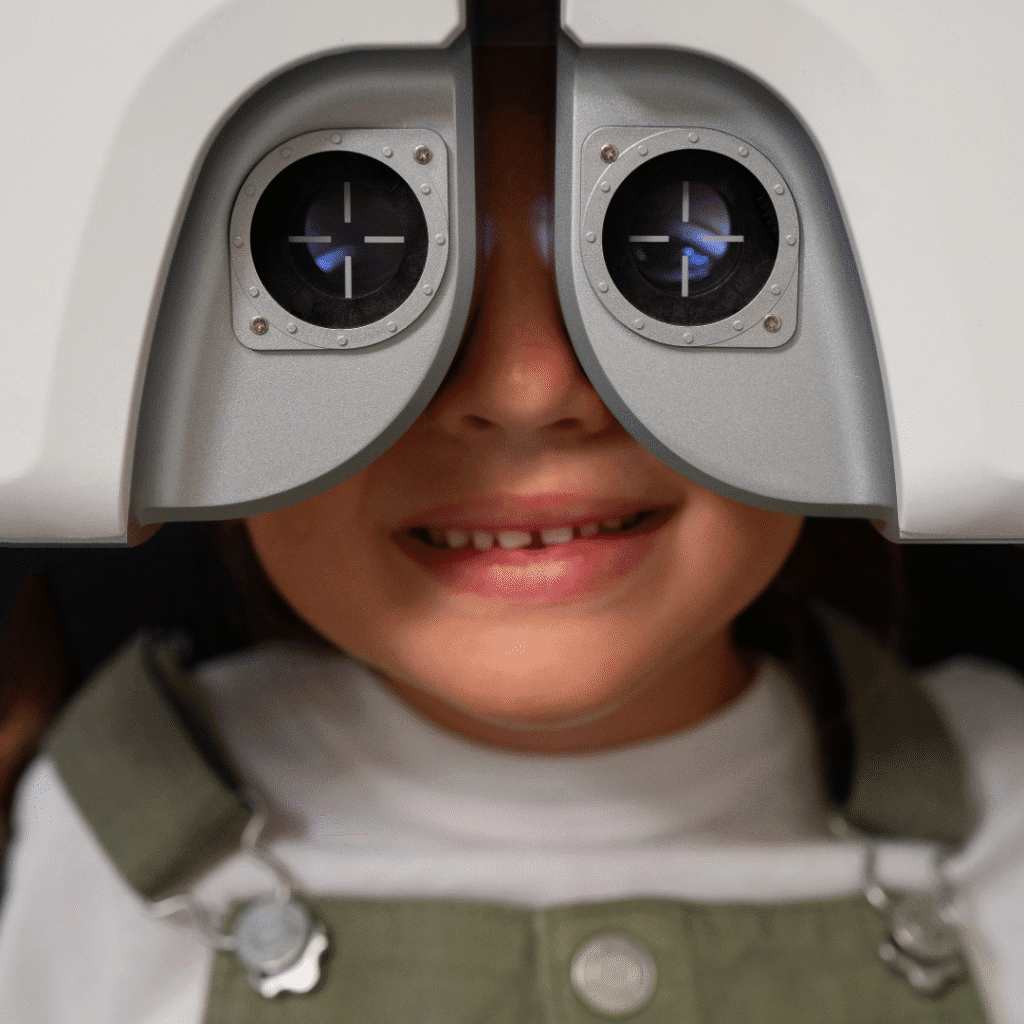
Why Children's Eye Care Matters in Nigeria
Children often can’t explain what’s wrong with their vision. In fact, many eye problems in kids go unnoticed until they start affecting learning, confidence, or daily activities. With the rise of screen use and digital learning, children’s eye care in Nigeria has become more important than ever.
Undetected eye issues can lead to poor academic performance, delayed development, or even permanent vision damage if left untreated. As a parent or guardian, knowing what signs to watch out for could make all the difference.
1. Squinting Frequently
If your child constantly squints while reading, watching TV, or trying to see objects at a distance, it could be a sign of refractive error (like nearsightedness or farsightedness). Squinting helps them temporarily focus, but it also strains the eyes.

2. Sitting Too Close to the TV or Holding Devices Close
Does your child always sit close to the television or bring a phone/tablet right up to their face? This is often a tell-tale sign of short-sightedness (myopia), which is becoming more common in kids.
3. Frequent Headaches or Eye Rubbing
If your child complains about headaches after reading or playing on a device, it could mean their eyes are straining to focus. Constant eye rubbing is also a response to eye discomfort or dryness.

4. Losing Place While Reading or Using a Finger to Track Words
Difficulty maintaining focus on a line of text may suggest issues like eye teaming or tracking disorders. Using a finger to guide reading is common for younger kids, but if it continues into school age, it might need a check-up.
5. Avoiding Reading or Close-Up Activities
Kids with uncorrected vision problems may start avoiding tasks that require seeing up close—like drawing, reading, or writing. It’s not always laziness; it could simply be that they can’t see well and feel frustrated.

6. Tilting the Head or Covering One Eye
If your child tilts their head or covers one eye while focusing, this might be a way to compensate for double vision or weakness in one eye. These are red flags that require immediate professional attention.
7. Drop in Academic Performance
A sudden or gradual decline in school performance, especially in reading or writing, could be linked to undetected vision issues. Teachers may notice it before you do.

When to Schedule an Eye Test for Your Child
Experts recommend that children have their first eye exam between ages 3 and 5, and at least once every two years after that—especially if there’s a family history of eye conditions.
If you’ve noticed any of the signs mentioned above, it’s important to schedule a comprehensive pediatric eye examination. A basic test at school might not be enough to detect deeper issues.
At this point, if you’re considering getting your child tested professionally, look for clinics that specialize in children’s eye care in Nigeria, offer detailed vision assessments, and provide gentle care to young patients.
Book a Pediatric Eye Test Today
Taking action now could help your child succeed academically, socially, and emotionally.
👉 Schedule a children’s eye exam at a trusted clinic near you.
📞 Or contact us directly: 08063363506

